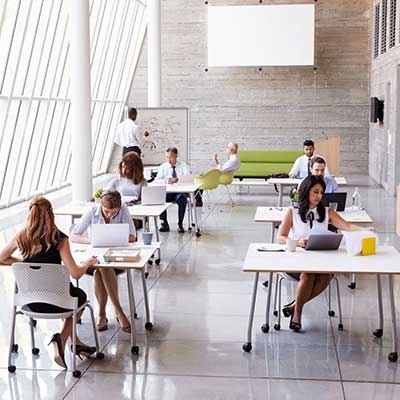Reasons why you should Work from a Coworking Space (Small Entrepreneurs / Freelancers)? | Shrestha| Assistant Editor| The People Management
 Coworking spaces are designed to offer collaboration and community in furnished and equipped workspaces on a rental base. Small entrepreneurs, freelancers and other employers should use coworking spaces to get work done, network and engage in their local business community. Vocal for local – Government is encouraging and helping people to support local products to improve the economy. Thus these small business would require a cost effective work place.
Coworking spaces are designed to offer collaboration and community in furnished and equipped workspaces on a rental base. Small entrepreneurs, freelancers and other employers should use coworking spaces to get work done, network and engage in their local business community. Vocal for local – Government is encouraging and helping people to support local products to improve the economy. Thus these small business would require a cost effective work place.
Working from home provides countless distractions, resulting in low levels of productivity. In addition, many who work from home have a challenge in establishing working hours, which results in a poor work-life balance and a decline in mental well-being ultimately. However, working from a coworking space reduces the number of distractions and increases your productivity, resulting in more tasks being done and a reduction in stress and anxiety levels.
Coworking can also increase employee autonomy and independence and in the aftermath of a reduction in the COVID-19 pandemic, return-to-work policies of companies with a traditional way of working and safety measures can cause stress to employees, which is certainly facilitated in coworking spaces, where occupational safety guidelines are part of a basic business policy tailored to the needs of the individual rather than the collective and very easy to follow. Coworking can play a big role in boosting mental well-being especially for those working in smaller companies or doing freelance jobs. As a business owner, working from home or café might not send the right message to your prospective clients, thus, coworking space offers not only a professional space but also dedicated meeting rooms, cafeteria and coffee zones to help you network better. The way an office is designed can impact your attitude toward work on a psychological level. The impact of workplace design includes both our physical responses to the internal environmental quality and our psychological responses to these spaces.


